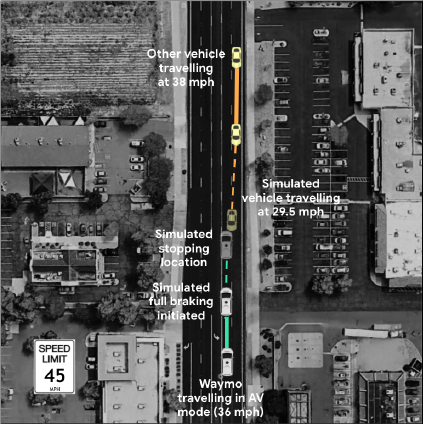Search
A Comparative Look at Various Countries’ Legal Regimes Governing Automated Vehicles
News and commentary about automated vehicles (AVs) focus on how they look and appear to operate, along with the companies developing and testing them. Behind the scenes are legal regimes—laws, regulations, and implementing bodies of different kinds—that literally and figuratively provide the rules of the road for AVs. Legal regimes matter because public welfare hinges on aspects of AV design and operation. Legal regimes can provide gatekeeping for AV developers and operators seeking to use public roads, and they can allocate liability when something goes wrong. Guiding and complementing legal regimes is public policy. Policy documents such as articulations of national strategies are sometimes used to address issues related to legal regimes and to demonstrate a jurisdiction’s support for AV development. Building on its long history analyzing AV policy issues, RAND (with support of its Institute for Civil Justice) collaborated with the University of Michigan Law School’s Law and Mobility Program to study the nature of different AV legal regimes around the world. It selected countries known to be active in this domain. The research team reviewed and shared scholarly and gray literature (which is a type of scholarship produced by an entity in which commercial publications are not the primary focus, such as white papers from a government agency), and it also consulted experts in these regimes from the public and private sectors. Under the supervision of the Law and Mobility Fellow (a lawyer), law students collected and studied materials associated with country-specific legal regimes and drafted summaries guided by RAND’s enumeration of key factors. Availability of information about legal regimes varies—access to documentation, especially in English, is uneven, even for officials in different countries working collaboratively on these issues. That constrained availability is reflected in published legal comparisons, and it motivated the research team’s systematic research, which drew from materials in English and other languages. This article summarizes the makeup of AV legal regimes of Australia, China, France, Germany, Japan, and the United Kingdom. It highlights some key contrasts, which will be developed further as the project continues. It focuses on law and policy relating to highly to fully automated vehicles (SAE Levels 4 and 5). Although guided by a common set of topics for each country, each profile reflects the material available and the factors that differentiate national approaches. The remainder of this article introduces the legal regimes of the covered countries in turn. It then provides an overview of key points of comparison and outlines future work.Are Voluntary Safety Standards the Way Forward for the CAV Industry?
Recently, I wrote about the prospects for federal legislation addressing connected and autonomous vehicles. While the subject will be taken up in the new Congress, the failed push for a bill at the end of 2018 is an indication of the steep hill any CAV legislation will have to…Automakers Must Exercise Advertising Caution on the Road Toward Autonomous Vehicles
Tesla’s enthusiastic marketing of its Autopilot feature may be landing the company in legal hot water. Last week, a Florida man sued the car manufacturer after his Model S crashed into a stalled vehicle at high speed. The driver, who allegedly suffered spinal and brain injuries, claims that Tesla’s…AV Safety at the UN: Why Does It Matter?
I previously blogged on automated emergency braking (AEB) standardization taking place at the World Forum for Harmonization of Vehicle Regulations (also known as WP.29), a UN working group tasked with managing a few international conventions on the topic, including the 1958 Agreement on wheeled vehicles standards. It turns…AVs and Insurance: Is There A Purpose For No-Fault Without A Driver?
In a recent article published on Reuters Regulatory Intelligence, a DC-area lawyer said the following regarding the potential of implementing no-fault insurance “to” automated vehicles: “Drivers have an inherent incentive to drive safely, so as not to be injured or killed on the roadways. That…Beyond the Coasts: 5G or Wi-Fi? V2V Standardization in Action
A European Commission plan to implement the connected car-specific 802.11p “Wi-Fi” standard for vehicle-to-vehicle (V2V) communication was scrapped early July after a committee of the Council of the European Union (which formally represents individual member states’ during the legislative process) rejected it. The standard, also known as ITS-G5 in…Beyond the Coasts: Automated Brakes Standardization Trending Globally
The European Parliament, the deliberative institution of the European Union which also acts as a legislator in certain circumstances, approved on February 20, 2019 the European Commission’s proposal for a new Regulation on motor vehicle safety. The proposal is now set to move to the next step of…Calls Grow for Nationwide Regulation of Connected and Autonomous Vehicles
To date, twenty-nine states have enacted legislation related to connected and autonomous vehicles (CAVs). Eleven governors have issued executive orders designed to set guidelines for and promote the adoption of CAVs. In response to this patchwork of state laws, some experts have argued that the federal government should…
Contact Responsibility as a Solution to AV Liability
By Matthew Wansley* Human drivers are a menace to public health. In 2019, 36,096 Americans were killed in motor vehicle crashes, and an estimated 2.74 million Americans were injured. Most crashes aren’t “accidents.” The National Highway Traffic Safety Administration estimates that driver error is the critical reason for…Evolution of Tort Liability in Response to Autonomous Vehicles
In the coming decades, advancing technology is likely to strain many tried-and-true legal concepts. The tort law cause of action for design defects is likely to be among the most impacted. This post will explore the current understanding of design defect claims, and highlight areas where autonomous vehicles and other…

